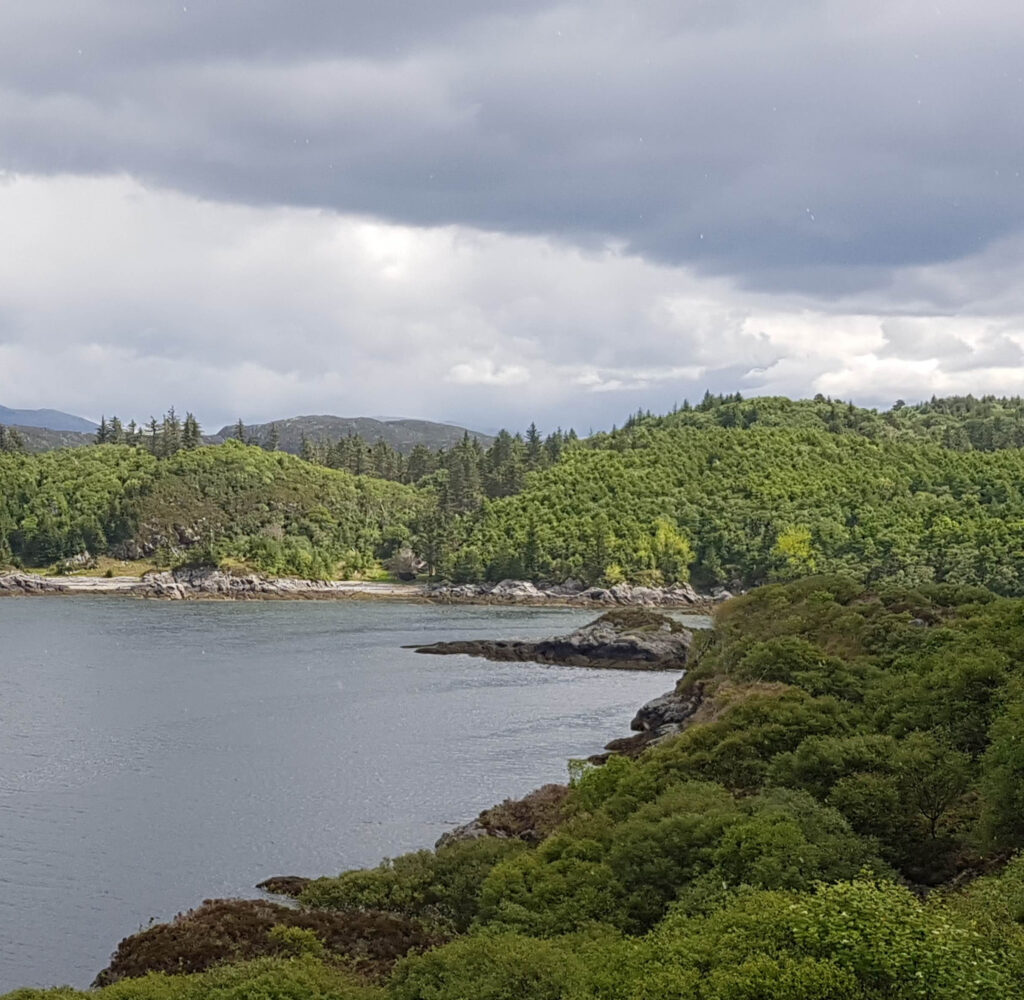Inspired by reading Tim Robinson, I’m very interested in the idea of delving deep into a particular place and all the stories it can tell. Tim Robinson sought to know everything about the places he lived, taking in geology, archaeology, history, language, place names and more. He lived in the west of Ireland for most of his life and produced numerous books. I’ve been on holiday and written a few blog posts – a few ripples in comparison to the great splash of his work – but I hope they resonate harmoniously.
I’ve written about an area just south of Lochinver in the west of Scotland. This first post is about two places and why Assynt is so empty.
Hill of the horses
Cnoc nan Each – “Hill of the horses” is both a hill and a place – shown on the OS maps as Cnocnaeach. Fewer than 2 kilometres from the pie-munching tourists of Lochinver it could not be more different.

It’s an attractive spot, a flat-bottomed area underlain by sediment and a contrast to the craggy wastes surrounding it. A range of different ruins show that people lived here for thousands of years. A range of structures (well described here and here) attest to countless generations tending livestock, making a living off the land.
All are gone. The gaelic-speaking people – who lived here and named every hill – were “cleared away” in the Nineteenth Century, put onto ships to Canada, all in the name of ‘improvement’. In economic terms, subsistence agriculture made no sense. To the land-owners, removing the people and filling the land with deer and sheep was a rational decision. The people who were cleared saw this as a tragedy, but nobody cared what they thought. Nobody with power, anyway.
Lady Constance Bay
Just 3 kilometres west of Cnoc Nan Each lies a small bay, marked on some OS maps as ‘Lady Constance Bay’. It’s named – I infer – after Lady Constance Gertrude Sutherland-Leveson-Gower, a member of the British aristocracy. At 18 she married the man who became both the Duke of Westminster and the richest man in Britain.

Constance is unlikely to have spent much time in Lochinver, but as the daughter of the 2nd Duke of Sutherland, she does have a strong connection to the place. Her family were descended – via the Scottish and then British aristocracy – from the head of Clan Sutherland. In Medieval times a clan head was a warrior chief, but by the Nineteenth Century the role was one of absentee landlord. Constance’s grandmother – as owner of most of Sutherland – ordered the clearances there in the name of improvement. The interior of Assynt was depopulated in 1812 on her command.

By 1847 the land was largely empty. In that year, Constance’s father – who liked to spend his money on improvements to his many buildings – planted Culag Woods. This attractive piece of woodland just south of Lochinver is clustered around Cnoc na Doire Daraich or “Hill of the oak thicket”. Lady Constance Bay lies just offshore the woods. Constance was 14 at the time; the bay was surely named in her honour.
New beginnings
Culag woods remains. It’s a community woodland and clearly well loved. The name Lady Constance Bay is not shown on the maps of the wood. I don’t know if the omission is deliberate, but it seems appropriate. Constance’s descendants remain some of the richest people in Britain, but they no longer own Assynt.
Change is slowly coming to Scotland. These two places are still on land owned by absentee billionaires, but following a community buyout a large portion of the interior of Assynt is owned by the Assynt Foundation, to be managed on behalf of local people. A fascinating aspect of the Highlands are the debates over how to move on from the ecological and human impacts of the clearances. Rewilding, wind farms and community buy-outs are all things bringing change to the area, but each raise as many questions as answers. As an outsider, it’s not for me to say how things should change – I’m not even clear whether my holidays there bring benefit or harm – but I’ll be watching with fascination.
